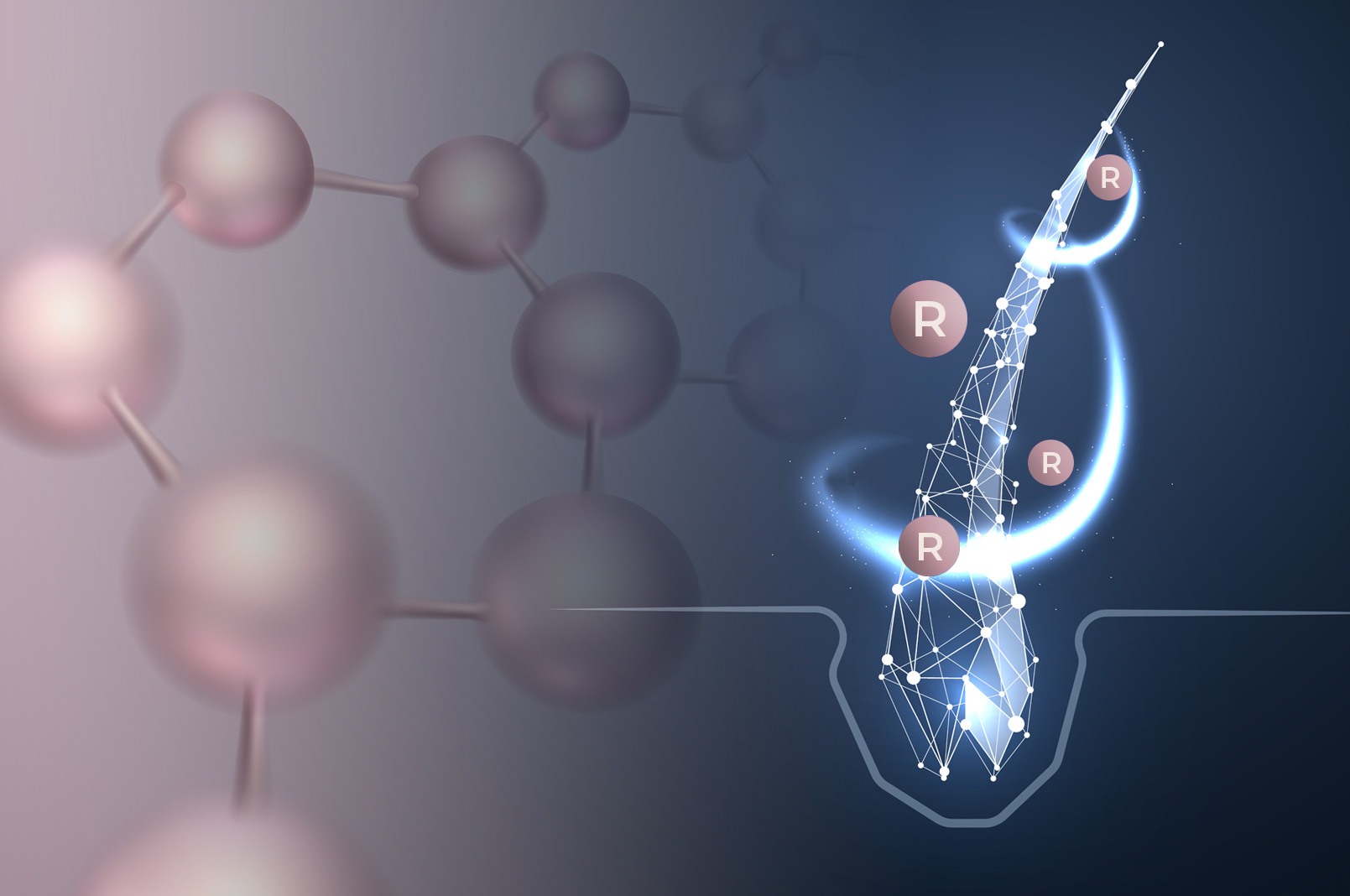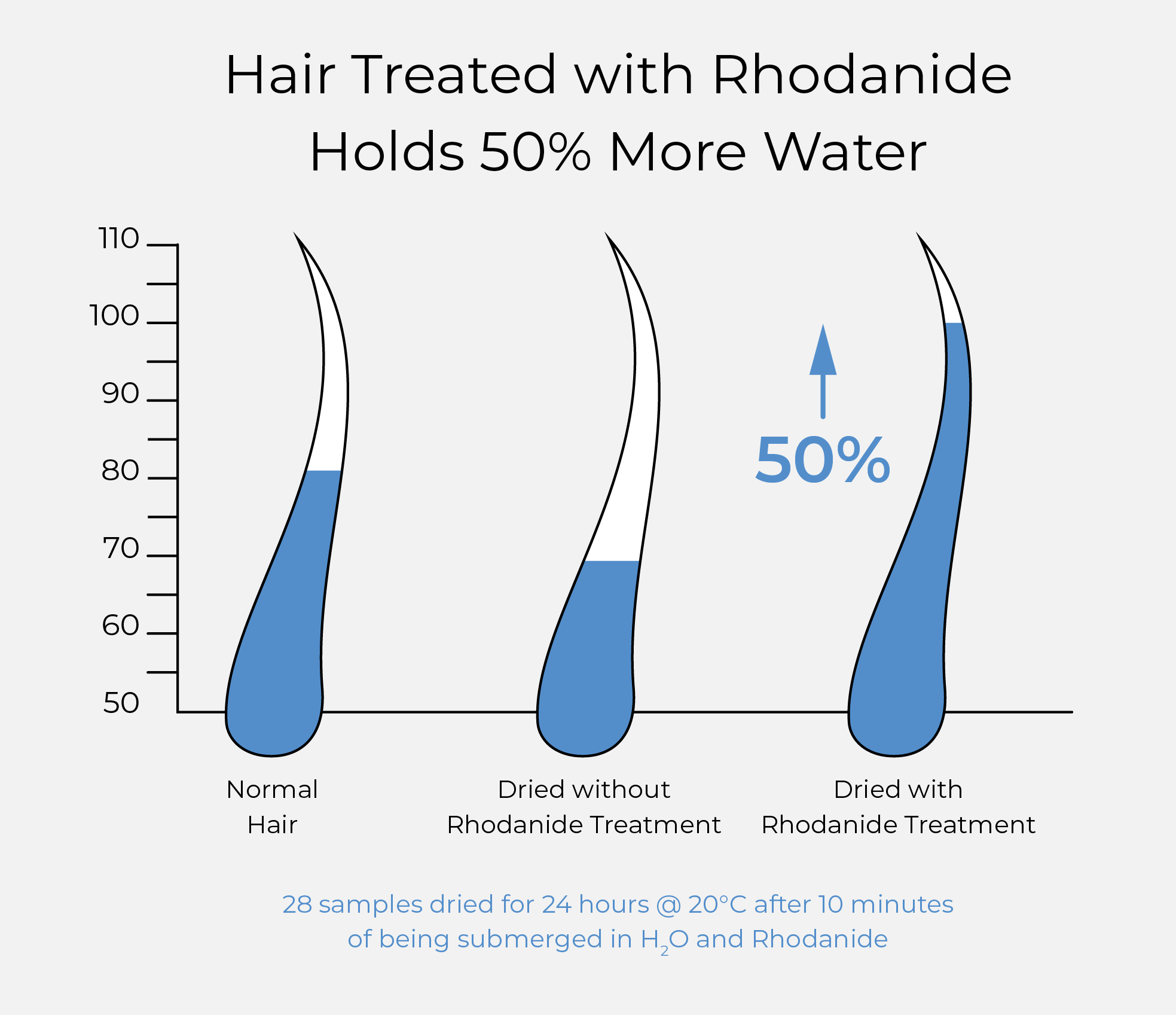Rhodanide (Thiocynate): An Essential Molecule

Rhodanide (also known as Thiocyanate) is a naturally occurring substance that was first discovered in 1799. The rhodanide molecule consists of 3 elements: carbon, nitrogen and sulphur together with two elements of Hydrogen and Oxygen from water, giving it the five essential elements to create organic molecules of all living cells and life.
The biological and medical importance of rhodanide has been documented during the last 50 years in over 200 scientific publications describing the essential role of rhodanide in activating membrane metabolism, enzyme (cAMP) and cell division processes. All cells and fluids of micro-organisms, plants, animals and humans contain rhodanide. In humans it is present in the blood serum and other body fluids such as saliva, tear and lung fluid. Rhodanide is very active because it has a high bonding strength and thus participates in many biochemical reactions. Its function can be compared to vitamins as it acts on a broad scale, participating in many biological reactions and bonds with free radicals acting as a natural decontaminant for a list of pollutants. In 1993 rhodanide was classified as a vitaminoid (vitamin-like substance). In 2017 the common form of Rhodanide, Sodium Thiocyanate was granted a Generally Recognised as Safe ("GRAS") food additive by US Food and Drug Adminstration (FDA).
Reduced supply or increased demand. (e.g. through illness) can lead to symptoms of deficiency like reduced strength of the defence mechanism. The knowledge that rhodanide participates in the defence mechanisms against germs (e.g. in the oral cavities and digestive tract) led to intensive research on its properties. Following World War II, Europe suffered from an extreme shortage of protein and vitamin rich nutrients such as meat and vegetables which are known rhodanide sources. The result was an increase in infectious diseases. Sulphonamide or antibiotics were not available. Therefore, products containing rhodanide such as Orthromin were used to combat the problem and increase people's resistance to diseases. In later years rhodanide enriched food was successfully given to the athletes of former East-Germany to increase resistance and endurance.
In order to reduce infectious diseases in farm animals, cattle, pig, and trout were fed a rhodanide rich diet with great success. Sheep and mink showed a positive side effect, an increase in wood production, a rise in shine and stronger fur quality. The finding that saliva of cats and dogs contains rhodanide and the common knowledge that these animals care for their hair using their saliva led to research on the effects of rhodanide on hair.
During the late 70's a team of German researchers lead by Prof. Wolfgang Weuffen* from the Universities of Berlin and Greifswald, concentrated their research on the hair follicle, a high-performance system which produces 0.35 millimetre of hair daily. The hair was interesting because it is subject to internal influences like nutrition and hormones as well as external influences such as shampoo, colour, permanent treatment, chlorine, sun, and mechanical stress. After 15 years of research, Professor Weuffen discovered that rhodanide could stop genetic and premature hair loss.
Extensive tests and clinical research proved that rhodanide acts even stronger on hair when applied topically than when taken with nutrition. Rhodanide has an affinity to hair which is five times higher than to skin. Contrary to many other formulations, rhodanide is absorbed by the hair and strengthens it from within. It activates the hair-growing cells and increases cell division. According to current observations, when applied to the scalp, rhodanide advances along the hair shaft to the roots of the hair and remains there without further invading the rest of the body (organism).
Tests, partly controlled with placebo groups, with more than 300 patients having various forms of premature hair loss (alopecia areata, diffusa and totalis) showed significant results: Nine months after a 4 time per week application of a rhodanide blended solution, new hair growth was observed in 91% of patients. In 55% of those patients with new hair growth 100% regrowth was observed. In 36% of those patients the regrowth was 60%.
Topical application of rhodanide showed revitalisation of dormant hair follicles and more rapid growth of hair and increased diameters. During the growing (anagen) phase it was observed that more hair grew at a higher speed. A controlled long-term study of male patients suffering from male pattern baldness, androgen alopecia, showed this new growing phase and within a few weeks even the loss of hair which before was above average, came to a stop after a bi-weekly intensive application. Surprisingly, follicles could be reactivated even when baldness had lasted for years. Half of the test persons treated with rhodanide regained their complete hair growth of 80% to 100%; a third of the persons achieved a growth of hair of up to 60% and 20% showed no effect. The success of rhodanide could be traced down to 2 qualities:
- Rhodanide has a high ability to bond even in different valences (bonding capacity). In the case of androgenetic hair loss or male pattern baldness, rhodanide can interfere with dihydrotestosterone DHT, which otherwise would inhibit healthy hair growth.
- Rhodanide supports the fibroblast proliferation (cell multiplications) in the metabolic centre of the follicle; the cells of the connecting tissue, eventually forming hair keratin, receive more nutritive substances.
Rhodanide is essential for the maintenance of complex keratin structures like hair. Its high ability to bond proteins strengthens the keratin structure by stabilising the disulfide bonds / bridges along with other or broken bonds. This increases the resistance of the keratin structures and strengthens the connections between cuticle and cortex. The bond between the rhodanide and the keratin is strong enough to withstand repeated rinsing. An intensive bi-weekly application of rhodanide is sufficient for the hair to establish a depot. This depot supplements the lost rhodanide if the hair is shampooed frequently or other factors like bathing in chlorinated or saltwater, hair perms or colouring, thus defending and maintaining the keratin structure. Consequently, the hair remains strong and resistant to mechanical stress; tensile strength is visibly higher compared to that of untreated hair. The cuticle layers which surround the cortex withstand combing and brushing better. The hair is protected so it will shine. The natural shine and glow of hair is derived from pigments located in the cortex beneath a cover of cuticle scales, the other layer of the hair's keratin structure.
If cuticle scales are damaged or not aligned the hair lacks protection from external damages. The closer these scales are aligned to the hair's cortex the better the light can reflect the hair colour. The ability of the cuticle scales to align properly requires an intact and highly-netted keratin connection between cuticle and hair-shaft (cortex). Rhodanide strengthens the keratin structure by stablising the sulphur-hydrogen bridges of the keratin; hair becomes much less porous; cuticle scales become neatly aligned, enhancing hair shine and the lasting properties of hair treatments (colours/perms).
A topical application of rhodanide provides an excellent protection for hair after it has left the follicle. Though the hair seems to be dead as growth is confined to its roots, the complex keratin structure is still susceptible to biochemical processes/damage. Therefore, Rhodanide strengthens the physical-chemical properties/structure of hair, of which the regained shine and elasticity is a witness.
4 Proven factors responsible for the success of rhodanide (thiocyanate) for hair wellness:

- The external use of rhodanide causes a significant increase of hair in the anagen (growth) phase (up to 85%) and a decrease of hair in the telogen phase (down to 15%) respectively. Double-blind clinical trials with persons suffering from different forms of premature hair loss, such as alopecia totalis, areata and diffusa, have shown new hair growth in 91% of the test persons. In male patients suffering from normal hereditary hair loss (androgenetic alopecia or male pattern baldness), the abnormal hair loss stopped in most cases. On bald areas when the baldness had not lasted for too long, new hair growth was stimulated, proving that rhodanide can re-reactive dormant follicles.
- Rhodanide has a high affinity for hair and is essential for hair wellness. Healthy and shiny hair showed higher rhodanide levels than damaged and dull hair. Hair loses on average 36% of its natural rhodanide level with each washing. This is important with frequent washing because the scalp cannot replenish the rhodanide loss if the hair is washed daily. The scalp needs several days to replenish the lost rhodanide which automatically leads to a rhodanide deficiency.
- As a natural moisturising factor, rhodanide increases the water content in hair keratins by more than 50%, leading to an increase in the hairs's physical-chemical qualities, such as volume, elasticity, strength and manageability. This is a lasting effect, since hair treated with rhodanide and dried over a period of 24 hours still has a higher mass than untreated hair.
- When stabilised and formulated properly and used per direction, Rhodanide is toxicologically harmless with no known side effects or interactions. In over 20 years of continuous rhodanide research, its application has been extremely well-tolerated.
As obvious as it may seem to research an existing basic molecule of earth's history and as easy as it is to simulate animal's care, it still took nearly 50 years to fully appreciate this important substance and its qualities. Today this nearly forgotten molecule comes back into the centre of public attention because of renewed research and interest in its anti- microbial benefit. Rhodanide in the body converts to Hypothiocyanite, an anti-microbial molecule 1,000 times more powerful than Rhodanide/thiocyanate forming an essential part of our immune system that defends us against the pathogens in our environment.
*This article is a summary of the reference book titled Medical and biological benefits of Thiocyanate (Rhodanide) original German title is Medizinische und biologische Bedeutung der Thiocyanate (Rhodanide) by Herausgegeben von W. Weuffen. Published by Veb Verlag Volk Und Gesundheit Berlin 1982.
Want to read more about Rhodanide? We've translated a research article on Activance with Rhodanide in hereditary hair loss treatment published in the Apotheker Journal in 1997 about Rhodanide and hereditary hair loss.
Recent Posts
-
Discover The Truth On How Often We Should Shampoo Our Hair
And its effects on Hair Loss, Aging and Hair and Scalp Health. The Results are in from the Acti
-
Uniquely different but Equally Effective Hair Health & Growth Ranges
What's the difference between Activance Hair Wellness & Activance Professional? That's one of o
-
Is your shampoo the culprit for triggering hair loss?
Could the Wrong Shampoo be Causing Your Hair Loss Issues? Many people experience hair loss at s




